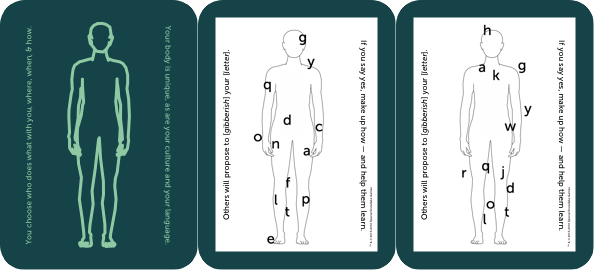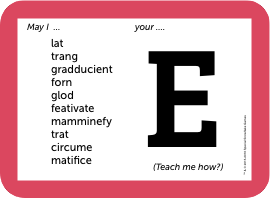Yes & No is a cute, funny, and collaborative consent-game that deals entirely cleanly with intimacy, communication, and different bodies. Made for two or more players, it can run the gamut from sweet to serious to silly, depending on who is playing and where they play.
Your mission is to connect and play with another being, in ways you both enjoy. Players say and hear both yes and no as natural, expected parts of play.
Even declining to play is in the spirit of the game!
Introduction to Play
Yes & No is a collaborative game in which anyone can decline any activity at any time.

Every one of us has a different body. We represent this in Yes & No by having different body maps. Each one has a different random selection of letters, and the letters are randomly scattered in different places across the body-map. When we begin play, each player draws a random body map. If we want to add more players at any point, they can each take a body map too. So you have a map card representing your body, and I have a different map card representing mine.

Every one of us is also from a different culture. We represent this in Yes & No by using gibberish and random letters. We might imagine for example that we are alien ambassadors from different planets, meeting each others’ species for the first time.

When we propose to do something with someone else, we don’t know what it means to them. Each pink card has a bunch of gibberish and a big letter. When you play the pink role, you propose nonsense to another player with text from the card: May I [gibberish] your [letter]?
Then you let each other player respond — yes, no, or “I don’t have one of those.”
If they said yes, ask them what it means, in their culture, to [gibberish] the [letter]. Ask for guidance. Maybe ask them to demonstrate on themselves. Then check in: do you both want for you to do that thing with them right here and now?
If you both say YES, then do it!![]()